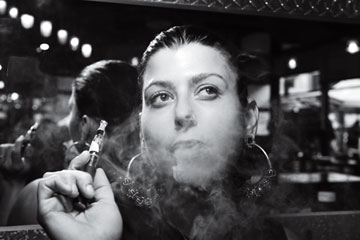
(7 of 7)
The CDC's tobacco expert, Dr. Tim McAfee, who approaches e-cigarettes with cautious optimism, is excited about the prospect that they might make it easier to eliminate tobacco cigarettes altogether, but he points out that CDC surveys about usage have also produced troubling results. The number of former smokers who had successfully quit and picked up electronic cigarettes more than doubled from 2010 to 2011, according to the CDC's latest survey. The percentage of high school students who had ever used an electronic cigarette more than doubled, from 4.7% in 2011 to 10.0% in 2012, and in 2012, 1.78 million middle and high school students in the U.S. had tried e-cigarettes, according to the CDC. It hasn't been long enough to see whether this means those kids will eventually switch to cigarettes, but a 2001 study published in Nicotine and Tobacco Research, for example, showed that males ages 11 to 19 who used snuff and chewing tobacco were more than three times as likely as nonusers to have become smokers four years later.
While they wait for regulators to weigh the pros and cons, e-cigarette makers are expanding their marketing efforts. In the first quarter of 2013, according to Kantar Media, e-cigarette spending on advertising rose to $15.7 million in the U.S., up from $2 million in the same period last year. Advertising data from Kantar shows placements by NJOY and Blu throughout mainstream media, on cable stations--e-cigarettes, unlike regular cigarettes, can advertise on TV--as well as in magazines (including Time). Some ads emphasize the rebellious nature of e-smoking and feature celebrities like Stephen Dorff and Jenny McCarthy, the spokespeople for Lorillard's Blu, re-creating the glamour of smoking that public-health advocates most fear. "It's time smoking changed forever," says a distant voice in what looks like a promotional video for space travel but is really an advertisement for Reynolds American's new e-cigarette brand, Vuse. "Welcome to tomorrow."
